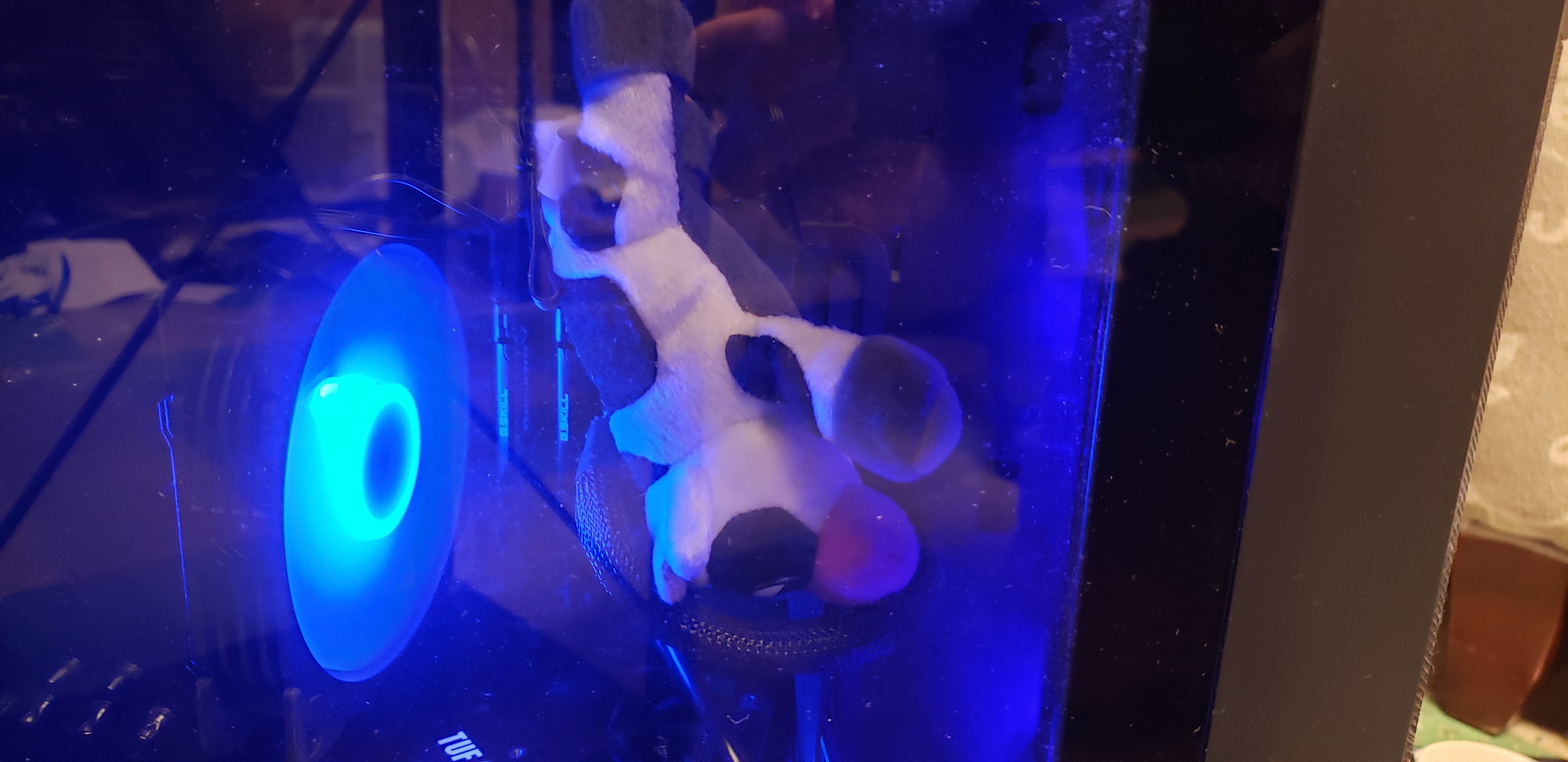I’m planning to install Arch Linux for the first time. Any recommendations on setup, must-have applications, or best practices? Also, what’s something you wish you knew before switching to Arch?
So many tips, let me add mine.
- btop - for monitoring and process management
- pacseek - terminal UI for installing, searching packages (uses yay)
- chaotic aur - repo for prebuilt binaries that are generally ok
When installing use the archinstall the first time, unless you really want to go into the deep end and use the normal install.
I wish I new how to easily install an AUR package manager when I first started.
Step 1: go to the AUR and choose a package manager. I recommend paru, but there are plenty of others.
Step 2: install git using pacman
sudo pacman -S gitStep 3: copy the git clone URL for paru and pull it
git clone https://aur.archlinux.org/paru.gitStep 4: CD into the new directory
cd paruStep 5: install paru
makepkg -siNow when you find a package from the AUR you want, you can easily install it.
paru -S [package]Also, when you update your system, you only need to run
paru -Syu. You don’t need to run bothpacman -Syuandparu -Syu.Also, just
paruis equivalent toparu -SyuGreat advice.
Btw you don’t need -S to install a package, just
paru packagename
Works fine
Why paru specifically?
Rust-based and actively developed
Rust based is not a feature it is a slogan. Yay is the defacto standard and also actively developed. That being said use whatever works for you and AUR.
Pacman is the only standard package manager for Arch. Arch recommends against using third party package managers, including Yay.
Is there a chance that Arch says that so they don’t have to take on the responsibility of endorsing yay while also acknowledging its prevalence?
Like if Nintendo made a statement saying they recommend against third party mods or repairs that deal with joycon stick drift because they don’t want to be held accountable or contacted about issues consumers run into a result of them.
My understanding is this:
It’s just the principle of AUR wrappers. Yes they are very useful, but anyone and their uncle can put a package in AUR name it whatever they want as long as it’s not taken. AUR wrapper makes it easier to install things without knowing much, but manually searching for something, finding it, and installing it involves conscious choices. Arch cannot be responsible for people installing malware from a software they recommended, that’s why it’s kept this way intensionally.
Imagine if yay/paru came with the os, or could be installed from pacman, then people would just recommend doing that to new users and then they might just install whatever and break the system a lot more.
They acknowledge many wrappers, not just yay. However, none are officially supported.
Stick to the many guides available and you will be fine. One thing which I either missed or was glossed over in most guides is to install the Linux-firmware package. It is considered an “optional” package, but on all the machines I have ever used I have run into issues without it.
Install it in a VM. Create snapshots. When you fuck it up then revert the snapshot.
Once you’re decent at figuring out what to and not to do then try to get proficient at file system snapshots so you can do the same thing more or less on bare metal.
This, and take physical notes, or at least make notes in something you can refer to on a screen that is not your phone, ideally another desktop or a laptop computer with internet access in case something unexpected comes up during the physical install and you need to search the archwiki or the wider internet.
Lol
“The best way to run arch is to have a second non-arch computer at all times”
I think that sums it up
I mean, its useful regardless of the OS. When my Windows install broke and a system image restore got botched it was useful having a laptop.
be patient. read thoroughly. be open to a learning experience
EndeavorOS if you want to have an easy time. Also be comfortable reading documentation.
If you don’t mind AI slop wallpapers every time you upgrade your system. I can’t wait to get rid of eOS on my desktop and just use regular Arch
I’ve only seen this on a system I hadn’t changed the wallpaper on. But agreed the stock ones suck
I don’t know why but even if I am setting my own wallpapers I still get to see the stock ones (when booting, etc), it pisses me off because it is clearly AI made and it seems the community around eOS likes them and even make worst ones on their forum
Why EndeavorOS over
arch-install?Mostly BC its low effort. The most intimidating thing about arch for me was the troubleshooting when things go wrong. I’m cool with that in general operation but not during the installation process. Endeavor makes it painless while still being a minimalistic install
What issues were you having with arch-install that you had to troubleshoot?
Manually resizing/replacing the efi partitions for Windows dual boot was where I decided to stop and switch to a graphical installer.
The archinstaller script is pretty good if you’re just needing a basic setup. Ive been really happy with a btrfs partion from the recommended disk layout, then using btrfs snapshots + grub bootloader to load from snapshots. You can also create a hook on pacman so that you create a snapshot when you upgrade packages.
Since you didn’t mention your experience, id recommend looking at the various desktop environments so you know which one to pick during install. You can ofc change later.
And read the arch docs. They are very good and have a lot of time invested into them. If you find you don’t have the patience to read them then you’re probably going to want to look at a different OS. Good luck!
The ArchWiki is amazing, probably don’t start by installing nothing but a window manager and adding things you need as you go
Probably don’t start by installing nothing but a window manager
Oops. I ran into a lot of problems by doing this, but boy did I run into a lot of tools too
I have learned so much but everything is so disfunctional because “I’ll get to it later” means never
Don’t?
I’ve been using Arch off and on for a long time, since it was horrible to install and updates did often break stuff. This is not the case now 🖖, and the Arch wiki is your friend.
-
Consider using btrfs with automated snapshots using yabsnap. It includes a configurable pacman hook in case something goes awry. Also just nice to have snapshots in case you accidentally delete a file or something.
-
Use paru, an AUR helper. Good for random things which may not be officially packaged. Expect to run into failures, and learn to diagnose them. Sometimes it’s just a new dependency the packager missed. For both paru and pacman, clean the cache once in a while or automatically, or things will get out of hand.
-
Do the “manual” setup, at least the first time, so you have an idea what’s going on. Don’t forget to install essential stuff like iwd (if needed) when you do pacstrap, or else you might have to boot from live again to fix it. Once you’re done, take care to follow the important post install steps, like setting up a user with sudo, a firewall, sshd, etc.
As for general setup, I’ve recently embraced systemd-networkd and systemd-resolved. Might be worth giving it a shot, since there is no default network manager like application. You can even convert all your wireguard client configs into networkd interfaces.
Best practice: Keep a personal log of various tweaks and things you’ve configured, and set up automated backups (more of general guidance).
Have fun!
-
Make sure you put “by the way I use arch” at the end of all your posts
And the neofetch print out
From the bottom of the installation guide: https://wiki.archlinux.org/title/General_recommendations
- ALWAYS avoid partial upgrades, lest you end up bricking your system: https://wiki.archlinux.org/title/System_maintenance#Partial_upgrades_are_unsupported
- The Arch Wiki is your best friend. You can also use it offline, take a look at
wikiman: https://github.com/filiparag/wikiman - It doesn’t hurt to have the LTS kernel installed as a backup option (assuming you use the standard kernel as your chosen default) in case you update to a newer kernel version and a driver here or there breaks. It’s happened to me on Arch a few times. One of them completely borked my internet connection, the other one would freeze any game I played via WINE/Proton because I didn’t have resize BAR enabled in the BIOS. Sometimes switching to the LTS kernel can get around these temporary hiccups, at least until the maintainers fix those issues in the next kernel version.
- The AUR is not vetted as much as the main package repositories, as it’s mostly community-made packages. Don’t install AUR packages you don’t 100% trust. Always check the PKGBUILD if you’re paranoid.
It doesn’t hurt to have the LTS kernel installed as a backup option (assuming you use the standard kernel as your chosen default) in case you update to a newer kernel version and a driver here or there breaks.
I had a similar issue that was resolved by swapping to the LTS kernel. Learning about using a bootable Arch USB and chrooting into your install to make repairs would be a good thing for OP to know
Install slackware instead! But if you must, yay.
Any reason you would recommend Slackware specifically?
I’ve watched a few Youtube videos on the history of it and the advantages of it but I don’t recall much. It seemed like a lot of people who had used Slackware a long time ago simply continuing to use Slackware and people using at as a learning tool because of how user involved it is.
Would you recommend people start with Slackware itself or a Slackware-based distro?
Do yourself a favour and install it on a virtual machine first. Screwing up an install on Arch is frighteningly easy. The Arch Wiki is your friend, use it. Also, read the installation instructions before you begin the installation, not during. If this sounds like too much of a headache (understandably so), then give EndeavourOS a whirl.
It’s all automated now, it’s pretty hard to mess up a standard install. It’s not like the good old days.
That’s what I thought, but then when arch install fcks up it seems even harder to fix. I ised it because I have been getting new computers so it was easier to run run it. It messed up the SSD in a way, and trying to run it again wouldn’t work because it can’t find the SSD that it did something to. It took a while to manually fix all that.
Also idk why arch install doesn’t have easy way to partition home and root, the default suggestions’s root is too small, changing it requires manually making each partition, just take an integer(%) allocated for home and calculate from there.
funny you say that since I just did it (in virtualbox thankfully) and gave up until I heard about endavourOS a few minutes ago
You boot into your installation media and type archinstall then pick the options you want. You can do it the manual way but Arch install works great.
Are you talking about archinstall or have they actually automated the default installation method?
Only update your system if you have some time on your hands afterwards, in case something breaks. Happened to me a few times before.
This.
“Just do a quick update” and spend 1h trying to fix some broken updatesAlso look at https://archlinux.org/news/ before updating (or follow the RSS feed), some updates may need manual intervention
Paying close attention to news feeds is something I wish I did when I ran Manjaro.














